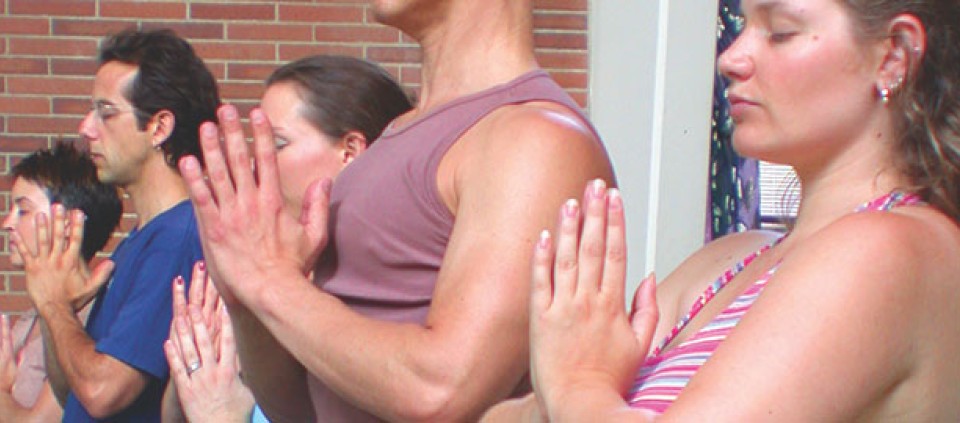Doctor of Yoga: A Q&A with Loren Fishman

Loren Fishman, MD, BPhil (Oxon), integrates yoga into his physical medicine and rehabilitation practice in New York City. He has conducted clinical trials studying the benefits of yoga for osteoporosis, piriformis syndrome, and rotator cuff tears, and is considered a creative pioneer in the field of yoga therapy. In this interview, he talks about his studies with B. K. S. Iyengar, his investigation into how yoga works, and the main causes of yoga injuries.
How did you first get interested in yoga?
I’d loved doing yoga since I was about 9, when I saw a kid doing yoga in a movie—I think it was the movie based on Rudyard Kipling’s Jungle Book. I played baseball, basketball, football, and everything else, but I really liked yoga. I discovered Patanjali’s Yoga Sutra in a bookstore in Oxford, England, soon after I’d graduated from Oxford with a degree in philosophy. I was interested in the foundations of mathematics and grammar, so I decided I was going to learn Sanskrit and try to uncover the beginnings of language.
I went to India to study Sanskrit, but after a month, I realized I was never going to learn it better than a four-year-old. So I gave up, and instead went all around India looking for holy people. Along the way, I was given a book by yoga master B. K. S. Iyengar. I practiced every pose in the book for a full year, and then I went to see the man himself. It was an immediate connection. I rented an apartment near Iyengar’s house and went to see him every single day for a year. He was very open and generous with his time and knowledge. After a year, he said to me, Go back to your country and teach my yoga. So when I was in med school, I taught yoga to the nurses, my fellow residents, and a few doctors who were interested.
At what point did you decide to become a doctor?
When I knocked on Iyengar’s door, he asked me why I wanted to learn his yoga, and I answered, I want to heal. As a kid, I wanted to be a doctor but, in college, I got much more interested in math and philosophy. It was only later, when I was in India and saw all the misery there, that it became clear that was what I wanted to do. When I got back to the States, I went to med school in part so I could legitimize my use of yoga for healing, and also find out how yoga works.
What were your methods for finding out how yoga works?
As a doctor of physical medicine and rehabilitation, I specialize in electrophysiological diagnosis, in which we measure nerve conductions in hundred of thousands of a second and millionths of a volt—it’s pretty high-tech stuff. My natural inclination was to turn this technology toward yoga in attempt to figure out how this ancient practice works. For example, I investigated piriformis syndrome [a neuromuscular disorder that occurs when the sciatic nerve is compressed] using electrophysiological means, to show how different yoga poses affect the sciatic nerve. Then I turned to other high-tech tools, like the MRI, and looked at how different muscles work during a yoga pose, and how the bones are adapting to the posture.
Applying medical tests to yoga means that I can give a scientific explanation for why certain poses do certain things. It’s very empowering for yoga teachers and yoga therapists to begin to see what’s actually going on in the body. In yoga, there’s a tension between the “eternal truth,” which so many people claim they have cornered, and the nature of science. Today many yogis are willing to believe that they don't know the whole truth, to revise what they know, to look at it in a more open way. That’s been so gratifying.
What are the main causes of yoga injuries?
Two big ones are poor technique and alignment, and inadequate or improper instruction—too big a class, too few helpers, teachers asking beginners to do crazy things they can never do just so the teacher can show off. In fact, teachers get injured more than students. But the main cause of yoga injuries is trying too hard, pushing too hard—ego and excess effort. The ways you work in yoga are not the same the ways you work toward being valedictorian or making a million dollars.
© Kripalu Center for Yoga & Health. All rights reserved. To request permission to reprint, please e-mail editor@kripalu.org.